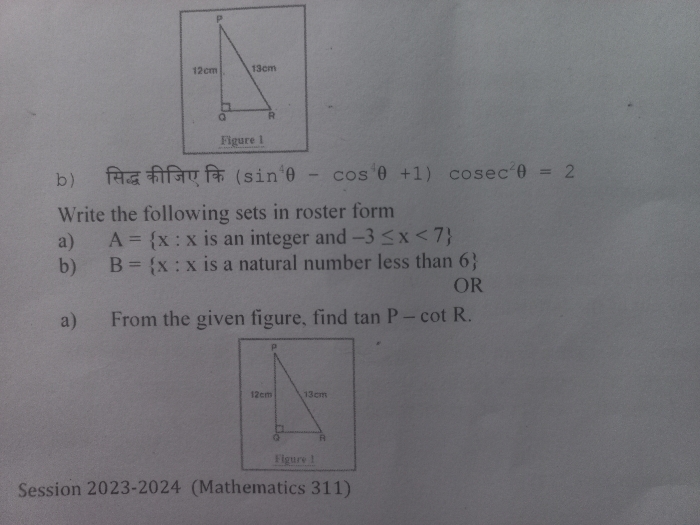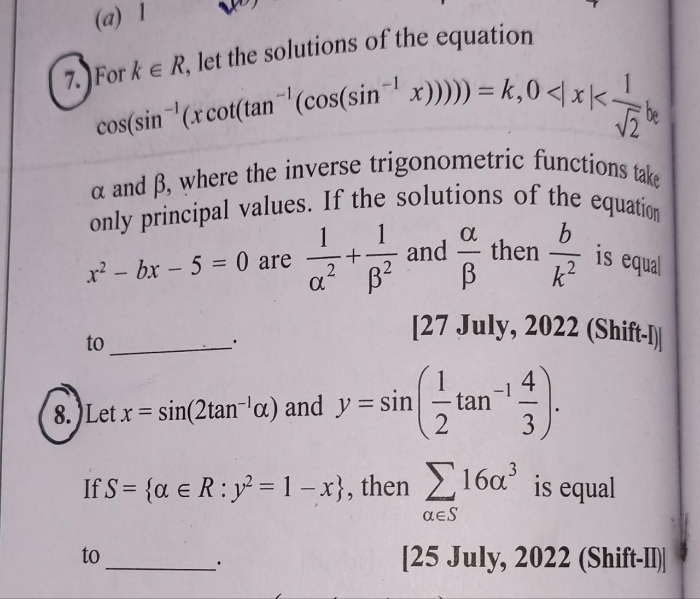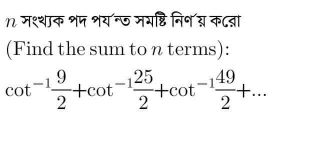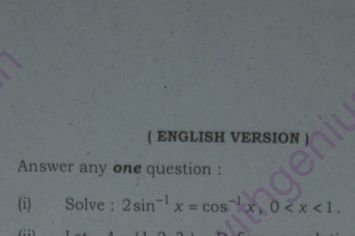CBSE Class 12-science Answered
please explain elaborately the concept of quadrants the argument values assigned to each quadrant. how to apply this concept in inverse trigonometry?
Asked by anchaka | 10 May, 2013, 05:45: PM
While computing the inverse of any trignometric function, one needs to pay special attention to the sign of the number whose inverse is being carried out.
For example, sin30 = sin 150 = 1/2
However, cos30 = sqrt(3)/2 is not equal to cos150 = -sqrt(3)/2 and there is just a change of sign.
So, if we need to determine sin^-1 (1/2), it can be anything, 30degree or 150 degree.
However, if we are also given the corresponding cos^-1 value, then we can clearly say that in which quadrant it is.
So, in the first quadrant i.e. x>=0 and y>=0; both sinA and cosA are positive and hence, tanA >0
in the second quadrant i.e. x<0 and y>=0; sinA is positive but cosA is negative and hence, tanA <0
in the third quadrant i.e. x<0 and y<0; both sinA and cosA are negative and hence, tanA >0
in the fourth quadrant i.e. x>=0 and y<0; sinA is negative however cosA is positive and hence, tanA < 0
This plays a major role when we try to find the argument in the case of complex numbers. So, argument = tan^-1 (y/x) for a complex number z = x+iy.
Now, in the quadrants I and III, tan(t) is positive. In the quadrants II and IV, tan(t) < 0. In quadrant I,arg(z) = arctan(y/x). But, for quadrant III, the positive arctan(y/x) must be upgraded with the addition of pi. Similarly, for z in quadrant II, arctan(y/x) is negative. To bring it to the second quadrant we have to add pi. For z in the fourth quadrant, arctan(y/x) is again negative, but its location is correct. To keep it there we now have to add 2pi, so that the value falls into the interval[0, 2pi). To sum up, denote ?0 = tan(y/x). Then
|
Answered by | 11 May, 2013, 02:47: AM
Concept Videos
CBSE 12-science - Maths
Asked by sahrudadayajena | 27 Jan, 2024, 09:11: PM
CBSE 12-science - Maths
Asked by rajashekararishu | 05 Jan, 2024, 09:31: PM
CBSE 12-science - Maths
Asked by ambigamagendran256 | 04 Nov, 2023, 05:43: AM
CBSE 12-science - Maths
Asked by gopalkumarrai87 | 11 Oct, 2023, 11:02: AM
CBSE 12-science - Maths
Asked by sdmbotch1123 | 10 Apr, 2023, 10:55: PM
CBSE 12-science - Maths
Asked by varma.renu9481 | 13 Mar, 2023, 11:51: AM
CBSE 12-science - Maths
Asked by w3ctiger | 12 Feb, 2023, 11:55: AM
CBSE 12-science - Maths
Asked by joymaibam38 | 26 Dec, 2021, 09:04: AM
CBSE 12-science - Maths
Asked by amansharma08116 | 14 Jul, 2021, 09:37: AM










